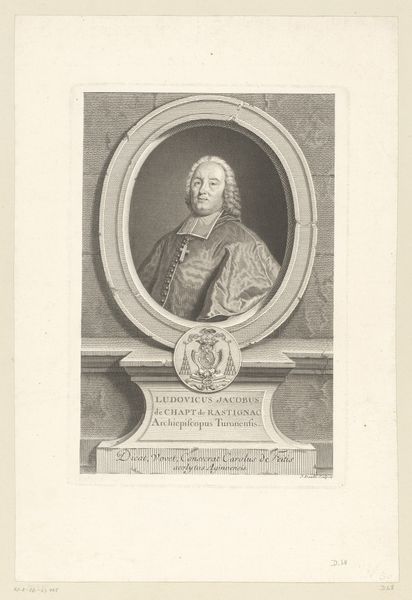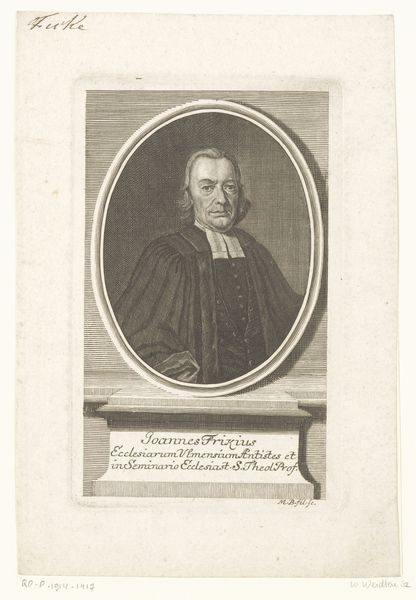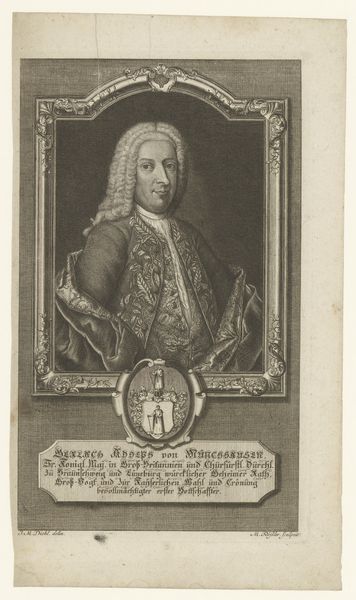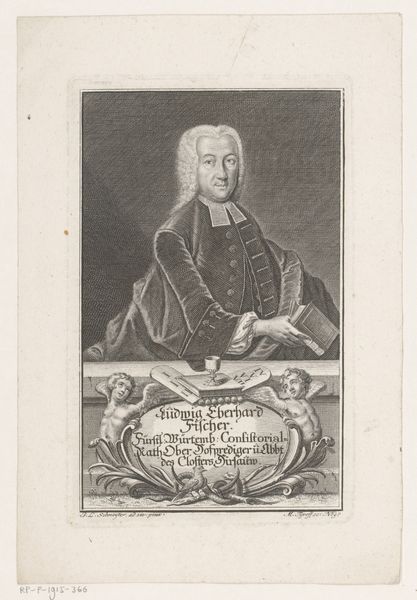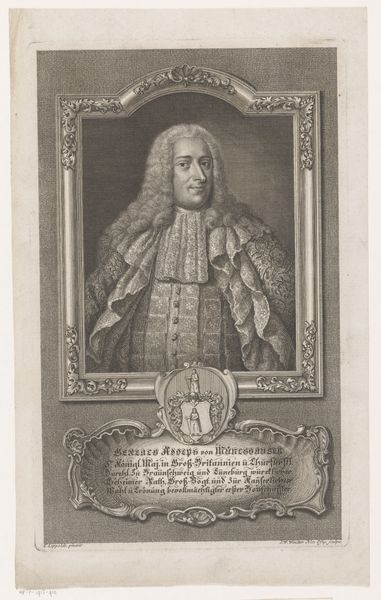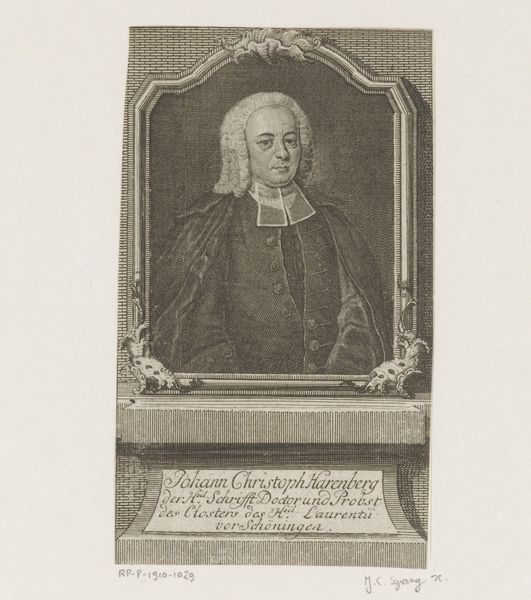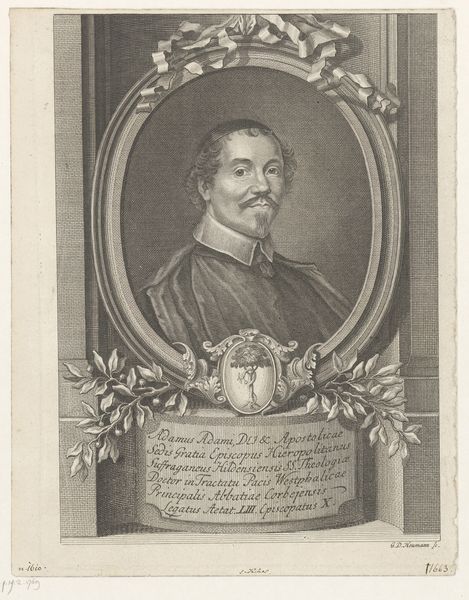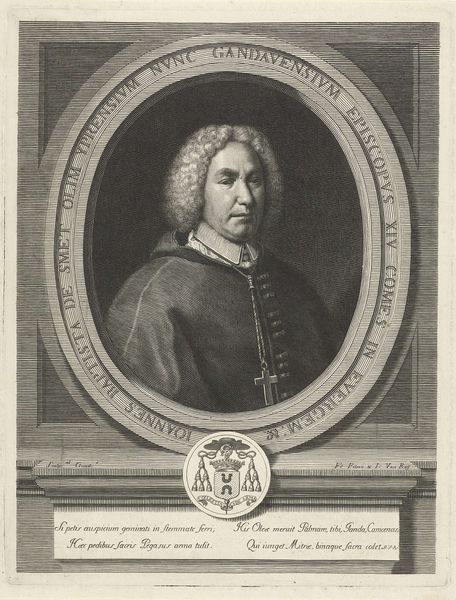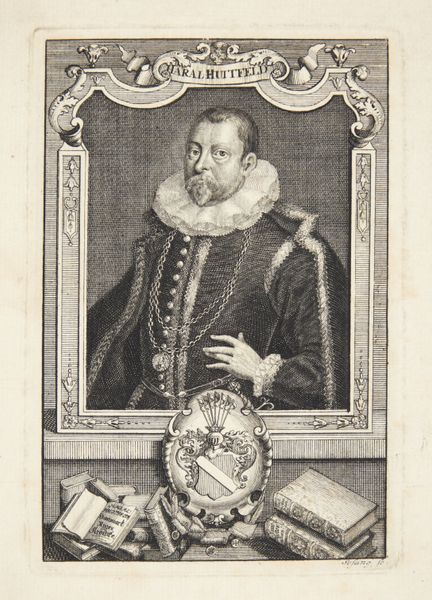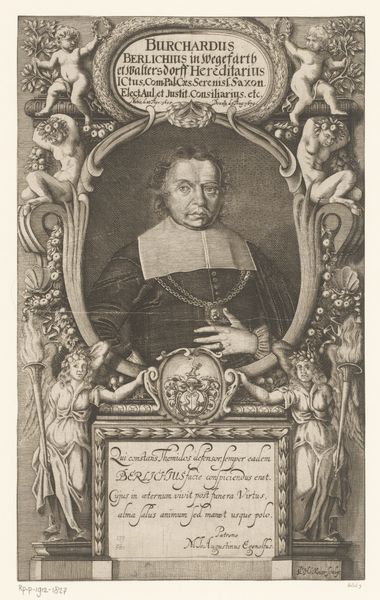
print, engraving
#
portrait
#
baroque
# print
#
old engraving style
#
italian-renaissance
#
engraving
Dimensions: height 220 mm, width 161 mm
Copyright: Rijks Museum: Open Domain
Editor: This is a portrait of Cardinal Antonio Sersale, an engraving made after 1754, now residing at the Rijksmuseum. I find the detail incredible for a print. How can we interpret this work in terms of its creation and place in society? Curator: Well, let’s consider the means of production. Engravings like this were essentially reproducible commodities. The labor involved – the skilled hand meticulously cutting lines into a metal plate – suggests a craft deeply intertwined with burgeoning capitalism and its means of distribution. Notice the Latin inscription and heraldic symbols. What purpose might this serve beyond pure aesthetics? Editor: It almost feels like a… mass-produced status symbol? Intended not just for viewing, but for affirming social hierarchy? Curator: Precisely. The material itself, the paper and ink, speak to access and dissemination. Engravings allowed for portraits of prominent figures to circulate beyond the elite circles who could afford painted portraits. Think about who commissioned this, and who would have consumed it. Editor: So, the value lies not only in the artistry, but also in how it participates in systems of power and social display? Curator: Absolutely. Consider the role of workshops and the division of labor in creating such prints. The act of engraving itself becomes a process of commodification and dissemination of power. Can we truly separate "high art" from these economic realities? Editor: I see, framing it as a product, really makes me think about art's relationship to commerce and its effect on social values, too. It definitely takes away that romantic, idealized perspective I sometimes get stuck in. Curator: Good. By exploring materiality, process, and social context, we can peel back the layers of ideology embedded within seemingly simple images and start seeing art as a dynamic participant in cultural production.
Comments
No comments
Be the first to comment and join the conversation on the ultimate creative platform.
